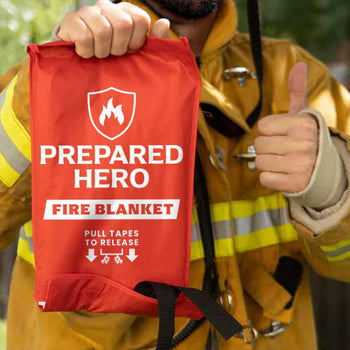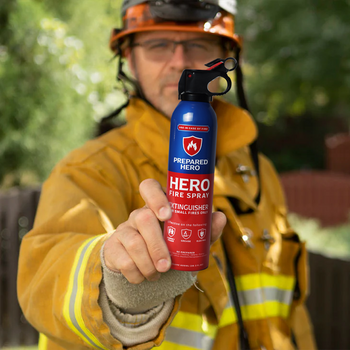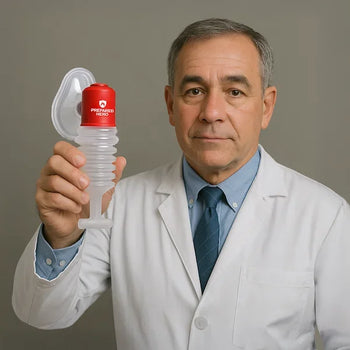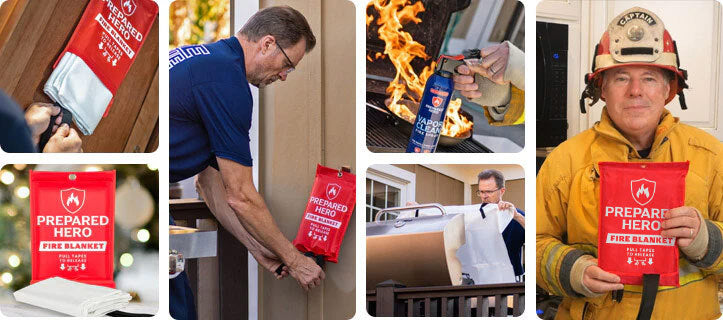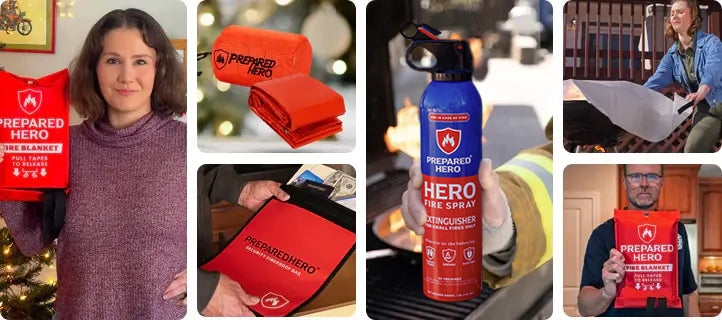Where you put your smoke detectors matters just as much as installing them. Proper placement makes sure they can detect...
Kerosene has been around for a long time, but most people only know it as “that stuff for heaters.” But kerosene has more to it. From lighting homes before electricity to fueling rockets, kerosene is a versatile fuel. In this guide, we’ll talk about what kerosene is, how it’s used, and how to dispose of it.
What Is Kerosene?

Kerosene is a clear, flammable liquid that’s been used for over a century to power lamps, heaters, and jet engines. It’s made from crude oil and sits in the same category as diesel in terms of how it's processed. Kerosene is light and flows easily. However, it can be turned into waxy, thicker stuff.
It was first made in the 1840s by a Canadian doctor named Abraham Gesner. Back then, kerosene came from coal tar and shale oils. Once oil drilling started in the US, petroleum took over as the main source. Plus, kerosene was used as lamp fuel at night until electricity became common. After that, kerosene’s popularity dropped. However, it’s still used in many homes around the world, especially in places without electricity.
Kerosene burns at a higher temperature than gasoline. It doesn’t light up as easily, which makes it safer to store. It smells a bit, but not in a bad way. In addition, kerosene is made up of several hydrocarbons, which are mostly types of paraffins and cycloparaffins. Depending on how it’s processed, kerosene can be separated straight from crude oil or heavier parts of oil.
What Is Kerosene Used For?

Kerosene is a versatile fuel that’s been around for centuries. Here are the different uses of kerosene:
Home Heating and Lighting
One of the most common uses for kerosene is heating. It’s a popular choice for homes without access to gas tanks or electricity. Some people still use it for lighting, like in oil lamps. For instance, the Amish who avoid electricity rely on it for nighttime light.
Jet and Rocket Fuel
Kerosene also powers planes and even rockets. A special type of kerosene called RP-1 is used in rocket launches. The Saturn V rocket, which took astronauts to the moon, used kerosene as part of its fuel mix.
Cleaning and Maintenance
Kerosene helps clean motorcycle chains and bike parts. It breaks down old grease and makes re-lubing easier. It’s also used to prevent fuel contamination when switching between different fuel types.
Fire Shows
Fire performers often use kerosene for fire breathing and juggling. It burns steadily, but it’s something to try at home.
Pest Control
Kerosene can also be used to kill bugs. It suffocates mosquito larvae in stagnant water and is known to get rid of bed bugs and lice. However, it’s not safe for skin contact or household use anymore.
Types of Kerosene

Kerosene comes in a few types, but the main ones you'll hear about are 1-K and 2-K. These are standard grades set by ASTM (American Society for Testing and Materials). The main difference between them is how much sulfur they contain, which affects where and how you can safely use them.
1-K Kerosene
1-K is the cleanest grade of kerosene you can buy. It’s usually clear or slightly yellow. It has low sulfur, that’s no more than 0.04% by weight. This makes it ideal for indoor use, especially in appliances with no chimney or flue, like portable heaters. Since it burns cleaner, you’ll notice less odor and fewer fumes.
If you're using kerosene indoors, 1-K is the grade you want. However, watch out for red-dyed 1-K. It can contain more impurities and produce more fumes than the clear version. Stick to clear 1-K for a safer burn.
2-K Kerosene
2-K has more sulfur, up to 0.30%. So, it’s not as clean-burning as 1-K. The higher sulfur level means it gives off more odor and harmful fumes. For that reason, 2-K should only be used in vented appliances, like those with a flue or chimney.
It’s also not recommended for portable heaters or anything used in a closed space. Plus, it can mess with how your heater’s wick works. This means more maintenance and fire risk. In a gist, don’t use 2-K if you’re not venting it outside.
Other Types of Kerosene

There are other kerosene types made for specific uses aside from 1-K and 2-K. Here are the other kerosene types and what they’re used for:
Heating Kerosene
Heating kerosene is a common type used in home heating systems. It’s designed to burn efficiently in domestic boilers and furnaces. C2 grade kerosene has a bit more sulfur than premium types, so it’s mostly used in systems with vent fumes outside. It works well and is affordable, which is why it’s popular for heating homes.
Kleenburn Kerosene
Kleenburn is a more refined version of regular heating oil kerosene. It still falls under the C2 category but is designed to burn cleaner. It also has fewer deposits and less smell. This means your boiler or heater will need less maintenance over time. It’s a great option if you want a better-performing fuel but don’t need the super-low sulfur content of premium kerosene.
Premium Kerosene
Premium kerosene, also known as C1 grade, is cleaner than standard heating kerosene. It’s used in indoor heaters and appliances with no flue or chimney. Since it burns cleaner, premium kerosene produces fewer odors and emissions. It’s ideal for enclosed spaces and often chosen for mobile homes or buildings without venting systems.
Odorless Kerosene
Odorless kerosene isn’t meant for heating. It’s a highly refined version of kerosene used in products like solvents or lubricants. It's also used in industries that need a clean-burning liquid without the smell of regular kerosene. However, you can’t use it to warm your house.
High-Flash Kerosene
You can’t also use high-flash kerosene for household heating. It’s for industrial use, mostly as a solvent. It’s called high-flash because it needs a higher temperature to ignite. This makes it safer for storage and handling in certain work environments.
Jet Fuel
Jet fuel or Jet A-1 is a type of kerosene used in aviation. It’s extremely refined and held to strict standards because it powers aircraft.
What Are the Effects of Kerosene?

Kerosene has many uses, but it’s not risk-free. Whether you're using it or just around it, knowing how it affects your body can help you stay safe. Here are the effects of kerosene:
Skin Irritation
Touching kerosene can make your skin red, itchy, or irritated. Some people might get rashes or blister-like reactions, especially with repeated contact. In rare cases, a person may be extra sensitive and get burn-like injuries. While it's not usually severe, it's best to avoid getting kerosene on your skin.
Eye Irritation
Kerosene is also a mild eye irritant. If it splashes into your eyes, you could experience redness, watering, and a burning feeling. It’s not known to cause long-term eye damage, but it can cause discomfort.
Breathing Problems
Breathing in kerosene fumes can irritate your nose, throat, and lungs. You might cough, wheeze, or feel short of breath. In more serious or repeated exposures, kerosene can lead to bronchitis.
Nervous System Effects
Inhaling a high amount of kerosene fumes can affect your brain and nerves. This can lead to dizziness, loss of appetite, poor coordination, and difficulty concentrating. Severe exposure might also cause convulsions, confusion, or a lack of oxygen.
Kidney Damage
Prolonged or repeated exposure to kerosene might also harm your kidneys. It’s not something that shows up right away, but your body may react if you’re always around it without protection.
Nausea and Vomiting
Swallowing kerosene is dangerous. Even small amounts can cause nausea, vomiting, and diarrhea. The biggest risk happens if someone vomits and inhales it by accident. This can lead to chemical pneumonia. Ingesting large amounts can also lead to coma, especially in kids.
Why Is Kerosene So Expensive?

Kerosene is expensive because of high jet fuel demand, lower production, supply issues, and higher refining costs.
Kerosene is a key part of jet fuel. With air travel picking up again, airlines are using way more. This demand raises kerosene prices. There have also been global supply issues. Sanctions against Russia—one of the world’s biggest fuel suppliers—have made it harder to get kerosene and other distillate fuels. Less supply means higher prices.
There’s also less demand for kerosene in homes. A lot of people have switched to other heating options, so refineries aren’t making as much. Wholesalers haven’t been stocking up either. They try to avoid losing money by buying too early. So when demand suddenly jumps, there's not enough to go around.
Refining kerosene also costs more than making other fuels. It has to be cleaner and more processed, especially for jet engines and space heaters.
Who Created Kerosene?
The story of kerosene goes way back. The first person to actually write down how to make it was a scholar named Razi (also known as Muhammad ibn Zakariya al-Razi). Around the 9th century, he described two methods for distilling kerosene from crude oil in The Book of Secrets.
Fast forward a few hundred years to China’s Ming Dynasty (1368 to 1644), and the Chinese also produced kerosene by refining petroleum. They’d been using crude oil for lighting and heating since around 1500 BC, so the idea of turning it into lamp fuel wasn’t new to them.
In the 1700s, people knew about a similar fuel called coal oil, which is a by-product of coal gas. However, it didn’t work well because it smoked too much when burned. At the time, whale oil was the top choice for indoor lighting because it burned cleanly and brightly.
Then came Abraham Pineo Gesner, a Canadian geologist, author, chemist, and inventor. In 1846, he publicly showed a new fuel he had made in Charlottetown, Prince Edward Island. He eventually named it kerosene, based on a Greek word that means wax oil. He trademarked the name in 1854.
In 1854, Gesner moved to New York and launched the Kerosene Gas Light Company. That’s when kerosene started lighting homes and businesses, long before electricity took over.
Is Kerosene Just Gasoline?

No, kerosene is not just gasoline. Kerosene and gasoline might both come from petroleum, but they’re not the same thing. They have different chemical makeups, uses, and safety levels.
Gasoline is way more volatile, so it evaporates and ignites easily. That’s why it’s used in car engines that need a spark to get going. Kerosene, on the other hand, doesn’t catch fire as easily. It has a higher flash point, so it's used in things like jet engines, kerosene heaters, and lamps.
Another big difference is how they’re made. Gasoline has lighter, shorter-chain hydrocarbons, which makes it more flammable. Kerosene has heavier, longer-chain molecules and tends to have more impurities since it’s less refined. This also means it burns differently and is generally less energy-dense than gasoline.
So no, kerosene isn’t just another kind of gasoline. They have different purposes and behave differently when used. Gasoline is more dangerous because of how easily it can explode or catch fire. Meanwhile, kerosene is safer for home or industrial use.
Is Kerosene Toxic to Humans?
Kerosene is toxic to humans, and it’s not something you want to mess with. Ingesting kerosene can cause a lot of issues. It can lead to vomiting, stomach pain, and severe consequences like convulsions or coma in larger amounts. Breathing in kerosene fumes isn’t safe either because it can irritate your respiratory system and cause difficulty breathing. It can also cause serious damage to your lungs when inhaled in large amounts.
In addition, getting kerosene on your skin can cause burns, rashes, and itching. Long-term exposure can increase the risk of cardiovascular diseases as well. In short, kerosene isn’t something you want anywhere near your body.
If you think you've been exposed to kerosene in a harmful way, get medical help quickly. Kerosene poisoning affects multiple parts of the body, so you must act quickly to avoid serious complications.
Why Is Kerosene No Longer Used?

Kerosene isn’t used as much today, mainly because of the health and environmental problems it causes. Burning kerosene indoors releases harmful pollutants like carbon monoxide and fine particles that can mess with your lungs and make breathing harder. Studies have also linked it to asthma, respiratory infections, and cardiovascular risks.
Back in the day, kerosene was popular for lighting and heating. But now, cleaner and safer options like electricity, natural gas, and propane are more common. These alternatives don’t come with the same health risks or air quality issues, especially inside the home. On top of that, using kerosene can be dangerous. It’s flammable and risky if not handled properly.
Nowadays, kerosene is mostly used in jet fuel, some industrial settings, or places without access to electricity.
Does Kerosene Go Bad?
Yes, kerosene can go bad. Kerosene exposed to moisture, heat, or sunlight breaks down faster. Water can get into the container through condensation, which leads to mold or bacterial growth. Eventually, it turns into a thick sludge and loses its ability to burn well.
Bad kerosene is easy to spot. It usually looks yellow or cloudy, has visible sludge or mold, or smells more like gasoline or diesel than usual. If you notice any of that, don’t use it.
Keep kerosene in a cool, dry place if you want it to last. Use containers that are airtight, thick, and opaque. You should also check it now and then before using it to make sure it’s still good. By doing this, you avoid problems and get the most out of your fuel.
What Color Is Kerosene?

Kerosene is usually clear or colorless, but sometimes it has a light yellow or light amber tint. In many cases, kerosene is dyed red to help tell it apart from other fuels like diesel. The red dye doesn’t change how it works or hurt any equipment; it’s just for identification.
Kerosene is usually clean-looking and doesn’t have solid bits floating around. It’s also pretty thin and has a light feel to it. So if you’re checking kerosene, just know it should be clear or lightly tinted, not murky or dark.
How Long Does Kerosene Last?
Kerosene can last for up to five years if you store it properly. This means keeping it in a thick, airtight container, away from heat, sunlight, and moisture. But even then, it’s best to use it within six months.
You see, kerosene breaks down over time. It might also get contaminated with water, mold, or bacteria. This can turn it into a thick, sludge-like mess, which makes it harder to burn. It could also mess up your heater or generator.
Bad kerosene usually turns yellow or cloudy, smells more like gasoline, or looks like it has gunk floating in it.
While five years sounds long, it’s still smart to rotate your fuel regularly. Don’t let it sit too long. Old kerosene can clog filters and reduce the efficiency of your equipment. If you're relying on it for heating or industrial work, fresh fuel is always the best. Store it right, check it now and then, and you’ll get the most out of it.
Is Kerosene Flammable?

Kerosene is flammable, but it doesn’t ignite as easily as gasoline. Its flashpoint is between 38°C and 52°C (100°F and 126°F). This means it needs to be heated to at least that temperature before it gives off enough vapor to catch fire. Once it hits that point, it can form explosive vapor-air mixtures.
For this reason, you should keep kerosene away from open flames, sparks, and heat. Smoking near it is also a bad idea. If it catches fire, use a fire blanket, fire spray, or Class B fire extinguisher to put it out. Never use water because it can make things worse.
It’s also smart to store kerosene in a cool, fireproof area. While kerosene is relatively stable, it’s still flammable, so treat it with care and always follow fire safety guidelines.
Are Kerosene Heaters Safe?
Kerosene heaters are safe if you use them the right way. They burn oxygen as they run, so you always need proper ventilation. Use them in a room with an open door and window to let in fresh air. This helps prevent carbon monoxide buildup, which can be dangerous.
Only use clear, 1-K grade kerosene on a kerosene heater. Never use gasoline or other fuels. Fill the heater outside, away from anything flammable, and only after it’s cooled off. Then, keep it on a flat surface, far from curtains and furniture. Don’t let kids and pets near it.
It’s also best to use kerosene heaters with safety features like automatic shut-off, a fuel gauge, and proper certification. Follow the manufacturer's instructions, especially when cleaning or adjusting the wick. And when the heating season is over, don’t store it with kerosene inside.
How to Dispose of Kerosene

Have some old kerosene sitting around? Don’t just toss it or pour it out. Here’s a simple guide to help dispose of kerosene properly:
1. Store It Properly
If you’re holding onto kerosene until disposal day, make sure it’s stored in a safe, sealed, and labeled container—ideally a plastic one made specifically for kerosene. Never store it in a gas can or any container used for other fuels. Keep it in a cool, well-ventilated area away from anything flammable.
2. Contact Your Local Waste Authority
Call your local waste management office or check their website. Look for a Household Hazardous Waste (HHW) drop-off location or collection event that accepts old fuels. Some recycling centers also take kerosene. Not every facility accepts it, so always confirm first.
3. Transport It Safely
When it’s time to drop it off, secure the container upright in your vehicle to avoid spills. Keep the lid tightly closed. Don’t leave it sitting in a hot car for long, and never smoke or light anything near it.
4. Don’t Dump or Burn It
Pouring kerosene down a drain or into the ground can harm the environment and contaminate water. Burning leftover fuel in your backyard isn’t safe either because it can lead to a fire and produce toxic smoke. Always use proper disposal channels.
5. Reuse or Donate
If your kerosene is clean and hasn’t been sitting around too long, you can reuse or donate it. A neighbor, farmer, or local non-profit may be able to use it. You can also post on community boards or local groups, but disclose that it’s kerosene and don’t mix it with anything else.
Conclusion
Kerosene has come a long way—from lighting lamps to powering rockets. It’s still useful, but not without risks. It can be toxic, flammable, and harmful if mishandled. While it's no longer common in most homes, it’s still used in aviation and some industries. If you’re going to use kerosene, handle it carefully and store it properly. Knowing how it works helps you stay safe and make smart choices around it.
Do you want reliable, easy-to-use, and affordable tools to put out small kerosene fires before they spread? Check out Prepared Hero’s fire prevention tools here, and get up to 51% off on certain items. Stay prepared, hero!


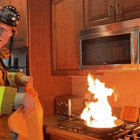 Fire
Fire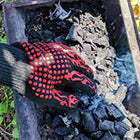 Safety
Safety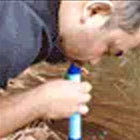 Survival
Survival Protection
Protection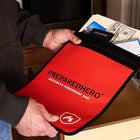 New
New
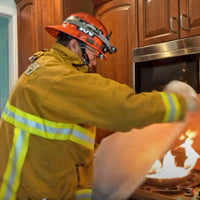 Fire
Fire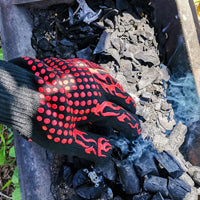 Safety
Safety Survival
Survival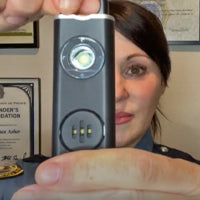 Protection
Protection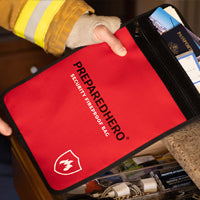 New
New
